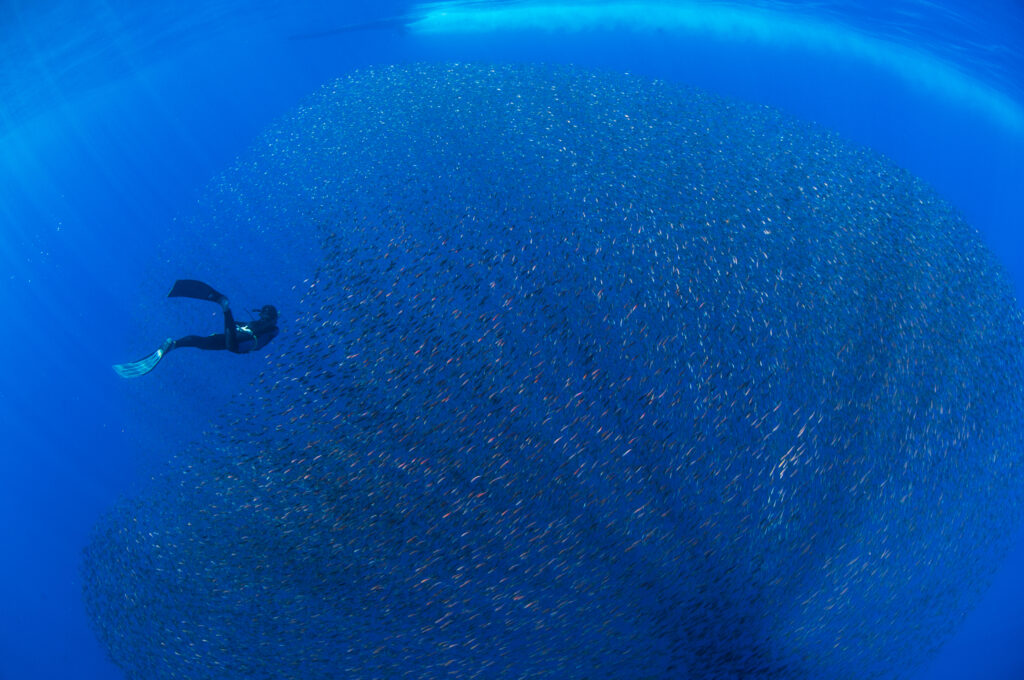What is No Fly / No Fly Time?

No Fly Time, also referred to as No Fly Zone or No Fly Period, is the recommended interval between the completion of a dive and boarding an airplane. It is an essential precautionary measure that helps prevent Decompression Sickness (DCS) and other altitude-related issues that may arise from flying too soon after scuba diving. The importance of observing No Fly Time stems from the physiological effects of pressure changes on the body, both during diving and air travel. Failure to allow sufficient time for these changes to normalize can lead to serious health complications.
What is Open Water Diving?

Open water diving is a fundamental form of recreational scuba diving, characterized by diving in natural bodies of water such as oceans, seas, and lakes. Unlike confined water diving, which takes place in controlled environments like swimming pools, open water diving offers divers the opportunity to experience the vastness and diversity of underwater ecosystems. This type of diving typically involves greater depths and more variable conditions, making it both a thrilling and challenging pursuit for enthusiasts of all levels. The concept of open water diving is integral to the sport, providing the foundation for various specialized diving activities and advanced certifications.
What is a Reverse Profile?

Scuba diving has grown significantly in popularity over the past few decades, drawing adventurers to the underwater world to witness its beauty and mysteries. A crucial aspect of scuba diving is dive planning, which ensures the safety and enjoyment of the divers. Within this context, understanding dive profiles becomes essential. A dive profile is the plan that outlines the depth and duration of a diver’s underwater journey. Among these profiles, the concept of a “Reverse Profile” has sparked considerable discussion. A reverse profile refers to a sequence of dives where a deeper dive follows a shallower one within a short period. This practice has historically been avoided due to concerns about decompression sickness, but evolving research and guidelines have started to shed new light on its implications.
What is Public Safety Diving?

Public safety diving refers to a specialized area of underwater diving focused on search, rescue, and recovery operations in various aquatic environments. Unlike recreational or commercial diving, public safety diving is conducted by highly trained professionals, often part of law enforcement, fire departments, or other emergency response teams. These divers are called upon to perform tasks that are critical to public safety, such as locating drowning victims, recovering evidence from underwater crime scenes, and conducting underwater inspections during disasters.
What is Visual Inspection?

Visual inspection in scuba diving refers to the systematic examination of diving equipment to ensure its safety and functionality. This process is vital in identifying potential issues that could compromise a diver’s safety. Given the high-risk nature of scuba diving, regular visual inspections are crucial for preventing equipment failure that can lead to serious accidents. This article delves into the history, purpose, techniques, common issues, and standards associated with visual inspections in the diving industry.
What is a Controlled Buoyant Lift?

A controlled buoyant lift (CBL) is a critical technique in scuba diving, essential for safely managing the ascent of an incapacitated diver. It involves carefully adjusting the buoyancy of both the rescuer and the casualty to achieve a controlled and steady ascent to the surface. This procedure is vital in emergency scenarios, ensuring that the casualty is brought to the surface efficiently and safely without risking decompression sickness or other complications associated with rapid ascents. The mastery of CBL is a fundamental skill for rescue divers and is included in advanced training programs across various diving certification organizations.
What is Recreational Scuba Diving?

Recreational scuba diving is a popular underwater activity enjoyed by millions of people around the world. It allows individuals to experience the underwater environment firsthand, encountering marine life and underwater landscapes that are typically inaccessible. Unlike commercial or military diving, which focuses on tasks such as underwater construction or defense, recreational scuba diving is primarily for enjoyment and adventure. It involves using a self-contained underwater breathing apparatus (scuba) to breathe underwater, enabling divers to spend extended periods submerged. This activity has grown significantly in popularity due to its appeal to adventurers and nature enthusiasts alike.
What is a Dedicated Dive Resort?

A dedicated dive resort is a specialized vacation destination catering specifically to scuba diving enthusiasts, offering a comprehensive and immersive diving experience. These resorts are strategically located in some of the world’s most sought-after diving areas, providing direct access to vibrant coral reefs, diverse marine life, and underwater attractions. What sets these resorts apart from standard holiday accommodations is their focus on offering tailored services for divers, which may include lodging, dive courses, equipment rental, and guided diving expeditions. Sustainability is a key principle for many dedicated dive resorts, as they place great importance on environmental conservation and responsible tourism practices, aiming to protect the delicate ecosystems that draw guests to these breathtaking underwater environments.
What is Command Signals?

Command signals are an essential aspect of scuba diving, ensuring effective communication and safety among divers. These signals allow divers to convey critical information without relying on verbal communication, which is impossible underwater due to the limitations of speaking and hearing in such an environment. As diving gained popularity and became more organized, the development and standardization of command signals became crucial for coordinating movements, sharing information, and handling emergencies.
What is Oxygen Therapy for Scuba Divers?

Oxygen therapy is a medical treatment that involves breathing pure oxygen or a gas mixture containing more than 21% oxygen. This method has been proven beneficial for various medical conditions and emergencies, such as decompression sickness, carbon monoxide poisoning, and hypoxia. In the context of scuba diving, oxygen therapy plays a vital role in promoting diver safety and ensuring a swift recovery from diving-related incidents.
